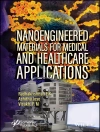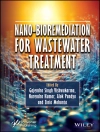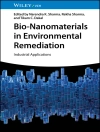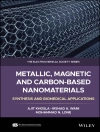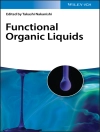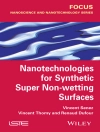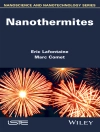This book reviews health hazards associated with wastewater use and water pollutants. Chapters present applications of green materials made of agricultural waste, activated carbon and magnetic materials for wastewater treatment. The removal of toxic metals using algal biomass and the removal of toxic dyes using chitosan composite materials are also discussed. The book includes reviews on the removal of phenols, pesticides, and on the use of ionic liquid-modified activated carbon for the treatment of textile wastewater.
Содержание
Preface.- Chapter 1 Environmental issues: A challenge for waste water treatment.- Chapter 2 Green nanotechnology for the environment and sustainable development.- Chapter 3 Activated carbon from different waste materials for the removal of toxic metals.- Chapter 4 Bioremediation of toxic heavy metals using marine algae biomass.- Chapter 5 Cost effective green materials for the removal of pesticides from aqueous medium.- Chapter 6 Rice husk derived adsorbents for water purification.- Chapter 7 Treatment of dye containing wastewater using agricultural biomass derived magnetic adsorbents.- Chapter 8 Date palm as a potential candidate for environmental remediation.- Chapter 9 Research updates on heavy metals phytoremediation: Enhancements, efficient post-harvesting strategies, and economic opportunities.- Chapter 10 Adsorptive removal of toxic dyes using chitosan and its composites.- Chapter 11 Ionic liquid modified activated carbon for the treatment of textile wastewater.- Chapter 12 Adsorption of pharmaceutical pollutants using lignocellulosic materials.- Chapter 13 Titania-montmorillonite for the photocatalytic removal of contaminants from water: adsorb & shuttle process.- Chapter 14 Jet fuel from domestic wastewater treatment using microalgae: A review.
Об авторе
Dr. Mu. Naushad is presently working as an Associate Professor in the Department of Chemistry, College of Science, King Saud University (KSU), Riyadh, Kingdom of Saudi Arabia. He obtained his M.Sc and Ph.D Degree in Analytical chemistry from Aligarh Muslim University, Aligarh, India in 2002 and 2007, respectively. He has a vast research experience in the fields of Analytical Chemistry, Materials Chemistry and Environmental Science. He holds several US patents, over ^5800 citations with a Google Scholar H-Index of >47. He has successfully run several research projects funded by National plan for Science, Technology and Innovation (NPST) and King Abdulaziz City for Science and Technology (KACST), Kingdom of Saudi Arabia. He is the editor/editorial member of several reputed Journals like Scientific Report (Nature); Process Safety & Environmental Protection (Elsevier); Journal of Water Process Engineering (Elsevier) and International Journal of Environmental Research & Public Health (MDPI). He is also the associate editor for Environmental Chemistry Letters (Springer) and Desalination & Water Treatment (Taylor & Francis). He has been awarded the Scientist of the year award-2015 from National Environmental Science Academy, Delhi, India and Almarai Award-2017, Saudi Arabia.
Dr. Eric Lichtfouse (Ph D), born in 1960, is an environmental chemist working at the University of Aix-Marseille, France. He has invented carbon-13 dating, a method allowing to measure the relative age and turnover of molecular organic compounds occurring in different temporal pools of any complex media. He is teaching scientific writing and communication, and has published the book Scientific Writing for Impact Factors, which includes a new tool – the Micro-Article — to identify the novelty of research results. He is founder and Chief Editor of scientific journals and series in environmental chemistry and agriculture. He got the Analytical Chemistry Prize bythe French Chemical Society, the Grand Prize of the Universities of Nancy and Metz, and a Journal Citation Award by the Essential Indicators.


